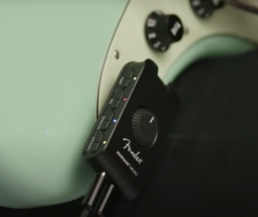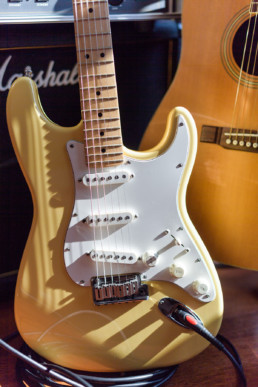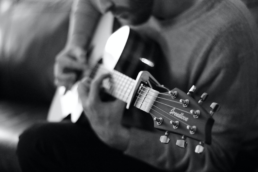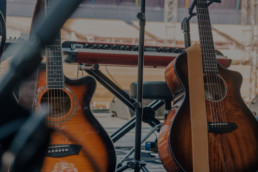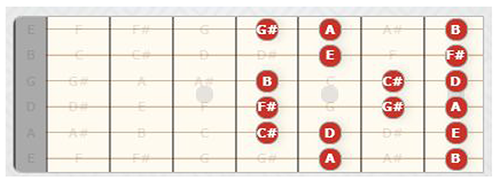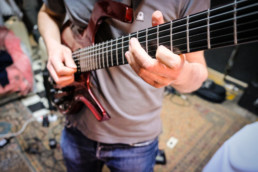JamPlay's 4th Of July Giveaway
JamPlay's 2023 4th Of July GIVEAWAY
Win a Fender Player Series Jaguar Guitar!
It’s that time of year again! Citizens nationwide gather, feast, and celebrate to honor the United States’ Independence Day. So, JamPlay’s decided to help kick off the celebrations with an exciting guitar giveaway. Enter with the form below for your chance to WIN a Fender Player Jaguar Guitar in Candy Apple Red!
Past JamPlay Giveaway Winners
Feb 2023
Gretsch G5232 Electric Guitar + SolidGoldFX Spring Reverb Pedal + Lava Surf Green Cable + Fender Shell Pink Cable
Anita C. from New York
Nov – Jan 2022/23
Kay Sherwood Guitar + VOX Amp Head + Tone King Amp Cab + Fender Reverb Pedal + MXR Vintage Dyna Comp
Brandon L. from Ontario
June / July 2022
Squier Classic Vibe Late ’50s Jazzmaster + Supro Delta King 12 15W 1×12″ Combo Amp + UAD Starlight Echo Station
Michael M. from N. Carolina
April 2022
Squier Classic Vibe 60s Thinline Telecaster
Todd F. from Florida
March 2022
Epiphone Slash Les Paul
Greg P. from Minnesota
February 2022
Guild Jetstar
Richard R. from Florida
January 2022
PRS Limited Edition SE P20E Parlor Antique White
Ollie B. from Washington
December 2021
Gretsch guitar, Harmony amp, and pedalboard bundle
Elton V. from North Carolina
November 2021
Fender Jazzmaster and Vox amp
Hannah A. from California
Related Posts
Test
Cool Guitar Gadgets & Guitar Stocking Stuffers
Gift Guide 2021 | JamPlay
Buying the perfect gift for the guitar hero in your life can be tricky. There’s always a new cool guitar gadget out there making the ‘gram blow up or the forum go wild. But don’t worry! Here at JamPlay we are ready to help. Whether you’re buying for yourself or for the guitar player(s) in your life, here’s a must-have list of essentials that will all but guarantee to be a hit as a stocking stuffer or compact package of good tidings to any grateful giftee. Let’s check them out:
Amp it up! Amplification on the go.
Arguably where a sizable chunk of your ‘tone’ comes from, we’ve got a few great little solutions for amplification no matter the locale.
Share this
Related Posts
Comments
5 Goals to Set as a New Guitarist Part 3: The Beginner Mentality
JP BLOG
Share this
Whenever starting something new, the gulf between what you know, and what you don’t know, and what you don’t know you don’t know, can be a big source of stress.
 The deeper you dive into music, the deeper you realize music goes. A person can spend a lifetime trying to get to “the bottom” or climb to “the top” and they can drive themselves crazy in the process.
The deeper you dive into music, the deeper you realize music goes. A person can spend a lifetime trying to get to “the bottom” or climb to “the top” and they can drive themselves crazy in the process.
Shed Self Doubt
It’s important that on top of all your practicing you take care of your mental state as a musician. Oftentimes when people quit guitar it’s not for any lack of skill or talent. Rather, it’s self doubt. So work to shed that and know that if you didn’t believe you had it in you to play, you wouldn’t have started in the first place.
People often quit because they lose faith in themselves; or they’re intimidated by the infinite possibilities of the instrument and don’t know where to begin. As someone who has quit guitar several times, that’s always been the case for me.
Develop a Strong Beginner Mentality. Enjoy the Journey
So what is the beginner mentality? It’s accepting that one person cannot fully master anything in their lifetime. It’s accepting that you won’t play everything that can ever be played. It’s accepting that the joy and beauty in music is not found at the end, but along the way, and it’s accepting that you will always be “on the way.”
 If you’ve picked up your instrument in order to be the best, you might as well put it down right now. As Qui-Gon Jinn so wisely stated: “There’s always a bigger fish.” There will always be someone who can outplay you, who knows more theory than you, who can play faster than you.
If you’ve picked up your instrument in order to be the best, you might as well put it down right now. As Qui-Gon Jinn so wisely stated: “There’s always a bigger fish.” There will always be someone who can outplay you, who knows more theory than you, who can play faster than you.
It’s not about being the best, it’s just about being good. A beginner can be good and, through hard work, consistency, and humility, you can get as far into music as you wish as long as you maintain that beginner mentality. Ready to get good, work hard and develop consistency in your play? Jamplay can help with guitar lessons from world class teachers in every genre and for every level. Get your beginner mentality set, grab your guitar and get ready to get good.
Join the more than 500,000 guitarists who have experienced JamPlay. Guitar lessons from world class instructor artists in every genre and for every interest to power up your guitar skill. Become a member today at JamPlay.com.
Related Posts
Comments
Music Theory for New Guitarists
JP BLOG
Share this
When you’re beginning to learn how to play guitar, it’s a good idea to get a basic grasp of music theory. You don’t have to know everything to be a good player, but knowing some will help you to make more informed choices of the notes and chords you play.
Music theory is really the art of determining what notes sound good together. You could, theoretically, put your fingers on the fretboard and play any random grouping of notes together, but the sound that resulted probably wouldn’t sound very pleasing to the ears. Instead, there’s an underlying system that musical notes adhere to. Some notes sound good together; some don’t.
Starting With the Major Scale
The foundation of all music is the major scale, which will be the focus of this post. Specifically, we’ll be focusing on how to build any major scale because there’s a definitive pattern to the notes in that scale.
Before we look at the pattern, however, you need to first understand all of the notes that are available to you. Music notes use the following letter names.
- A B C D E F G
But some of the letters have notes in between them, denoted by either a sharp (#), which means the note is higher than the note letter name, or a flat (b), which means the note is lower than the note letter name. For example, there is a note between A and B, which can be called A#, which means that it’s a half step above A, or Bb, which means that it’s a half step below B.
The complete list of note names is below.
| A | A#/Bb | B | C | C#/Db | D | D#/Eb | E | F | F#/Gb | G | G#/Ab |
As you can see, there are a total of 12 notes from which you can build musical scales. Major scales, however, only use 7 of those notes plus the octave above the root note. An octave just means that the note is the same as the root note, just higher in pitch. A high A, then the next higher A, for instance. Same note, just higher in pitch.
Between each note is a half step, so A to A# is a half step. Two half steps is a whole step, so A to B would be a whole step.
The Pattern of the Major Scale
The pattern of half steps and whole steps to build a major scale is: W W H W W W H (whole, whole, half, whole, whole, whole, half). On the fretboard, you can think of each fret as one half step apart. For example, the first and second fret are a half step apart, but the first to the third fret would be a whole step apart.
Start on any note in the 12-note scale above and use the pattern to create any major scale. If you start with the note A and follow the pattern you end up with the major scale in the diagram below.
Likewise, on the fretboard, if you start on any note, you can follow the pattern of half steps (1 fret) and whole steps (2 frets) to create a major scale, as in the diagram below.
Of course, when you’re playing scales, you won’t play them just on one string. Instead, you’ll play them across the fretboard, often in a box pattern, like in the diagram below.
You can move this box pattern up and down the fretboard starting on any note on the sixth string to play any major scale.
You can play the scale up and down or play notes within the scale to create melodies that have a major sound to them. Next time, we’ll look at how to combine notes in the major scale that sound good together to create chords.
Join the more than 500,000 guitarists who have experienced JamPlay. Guitar lessons from world class instructor artists in every genre and for every interest to power up your guitar skill. Become a member today at JamPlay.com.
Related Posts
Comments
5 Goals to Set as a New Guitarist Part 2: Understanding the Difference Between Chords and Chord Shapes
JP BLOG
Share this
On the surface, the distinction between chords and chord shapes might not seem that important. However, being able to distinguish the patterns we use from the actual music itself is extremely important in order to gain a deeper understanding of your instrument and the artform as a whole.
Matching Shapes to Theory
First, let’s define just exactly what a chord is. A chord is two or more notes played together. In most popular music, chords are composed of three notes, the root, the third, and the fifth. These chords are called triads, and most chords you’ll encounter in western popular music will be either major or minor triads.
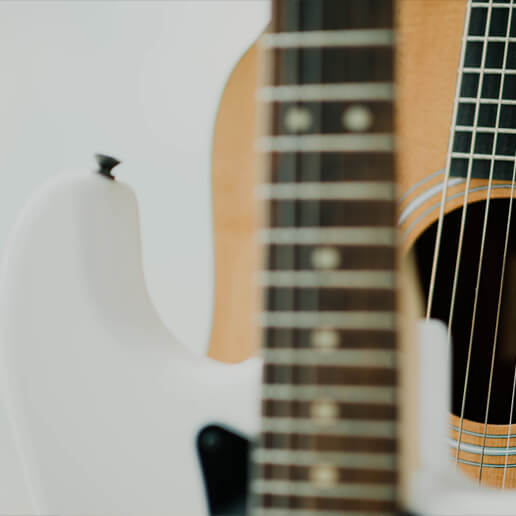 Other chords such as 7th chords, 9th chords, and sustained chords, all add additional notes to the triad. Power chords can also be called 5 chords and simply omit the third. It’s important to remember that when you’re playing your guitar and fretting all the chord shapes you’ve memorized, you’re not playing those shapes; you’re playing all the notes within those shapes.
Other chords such as 7th chords, 9th chords, and sustained chords, all add additional notes to the triad. Power chords can also be called 5 chords and simply omit the third. It’s important to remember that when you’re playing your guitar and fretting all the chord shapes you’ve memorized, you’re not playing those shapes; you’re playing all the notes within those shapes.
The Magic of Geometry in Music
So why do we think in terms of chord shapes? Why does a D major played open look like an upside down triangle? Why is the C major slanted? Why are barre chords so insanely hard to play? To make playing music easier. Guitarists should always take advantage of chord shapes because the guitar’s fretboard is structured in such a way to turn music into geometry. If you weren’t thinking in shapes you wouldn’t be taking full advantage of your instrument.
Let’s take that D major shape as an example. The note you play with your ring finger within that shape is D, which in D major is the root. Now slide that same shape up two frets, with your ring finger on the fifth fret of the B string. The root is now E, and you’re playing E major. Slide the shape up to the 8th fret and you’re playing Gmajor and so on.
If you combine your knowledge of chord shapes and knowing the function of each finger (and therefore each note) in the chord, then you will have mastered an extremely important part of the guitar. After that there’s not much that will be out of your grasp as a musician. To get started matching the shapes to the theory, check out these lessons on Jamplay.
Ready for more about taking your guitar skills to the next level? Real progress is made in the mind and relies on the beginner mentality. Explore how here.
Join the more than 500,000 guitarists who have experienced JamPlay. Guitar lessons from world class instructor artists in every genre and for every interest to power up your guitar skill. Become a member today at JamPlay.com.
Related Posts
Comments
5 Goals to Set as an Aspiring Guitarist Part 1
JP BLOG
Share this
There’s no standard user manual for learning guitar. How you want to approach the instrument, how you want to play it, where you want to go with it, that’s all up to you. Here are a few goals to work for to get you read to make those decisions.
1. Learn Your Notes
Strangely enough notes and tab are not the same thing, and I’m not disparaging tablature! It’s a great way to learn songs fast, but you’re doing yourself no favor. If you want to learn theory, how to write songs, and how to read music, you gotta learn your notes.
The good news is there are only 12 notes. There are 26 letters in the English alphabet and we learned all of those easily enough in pre-school. Here are some tips that can help fast track learning your notes:
- Get started learning certain notes
- Memorize all the notes at the dotted frets first
- Practice the circle of fourths on each string while saying the notes out loud
Need some help? Learn how to find every note on the Fretboard.
2. Learn the G, C, and D Major Chords
I struggle to think of a song that doesn’t include at least one of these chords. These three chords are responsible for much of the music we enjoy today and, if you want to get “capo crazy,” these three chord “shapes” can be used to play a wide variety of songs.
First let’s get a better understanding about the difference between chords and chord shapes. Being able to tell the patterns (shapes) we use from the actual music itself is extremely important in order to gain a deeper understanding of your instrument and the artform as a whole.
Now with that understanding, check out JamPlay Chord Shapes and Sizes, Part 1 lesson and Chord Shapes and Sizes, Part 2 lesson to learn how you can create different sounds using chord shapes.
Mastered that and ready to take it to the next level?
JamPlay offers in-depth lessons across every genre to help you power up your guitar technique. Become a member to continue your learning.
3. Know How To Tune Your Guitar
It took me nearly an hour to tune my guitar the first time I tried it. I was absolutely terrified that I would break the instrument. But you won’t break your guitar just by tuning it… usually. Tuning is absolutely vital to becoming a good musician. If your instrument isn’t in tune, you aren’t in tune, and if that’s the case why bother playing in the first place? Learn from an expert. A Guide to Relative Tuning by Nick Kellie.
4. Know How To Hold Your Pick
The pick was one of the most vexing aspects about guitar for me. It was part of the reason why I switched to the bass for a couple years before coming back. Picks come in many different varieties but generally they’re all held in the same manner: point down. I know this might sound self evident, but for weeks I held my pick upside down and couldn’t figure out why I was having trouble.
Check out JamPlay’s lesson on knowing how to hold your pick to make sure you’re ready to rock. Visit Jamplay.com to become a member.
5. Know How To Restring Your Guitar
This is undoubtedly the most daunting task that a beginner has to come up against. But restringing your guitar can become a fun and somewhat intimate experience for guitarists.
Unless you’re really looking to reset your neck tension (something much, much harder) I’d recommend changing your strings two at a time, usually going lowest to highest. Experiment with different string gauges and see what feels best to you.
Now, with these five goals in mind you should find guitar to be a little less daunting by the end of your first month or so of practicing. Real progress though, is made in the mind, and to get deeper into that we need to talk about the beginner mentality.
Join the more than 500,000 guitarists who have experienced JamPlay. Guitar lessons from world class instructor artists in every genre and for every interest to power up your guitar skill. Become a member today at JamPlay.com.




